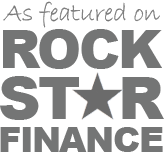Many people blog to express themselves. Many others blog to make money. Truthfully, most bloggers do it for some combination of both reasons. Those that are trying to make a living by blogging usually go all out learning about branding and content and market share. They treat blogging as a job and they need to learn ways to find their voice and to distinguish themselves in their area of interest to be successful. They know that attracting readers doesn’t just happen magically. They need to work to deliver good, regularly published content, have a consistent brand or theme, and strive to make their blog the best they can.
Everyone Should Have Some Marketing Knowledge
But even those that blog for fun can benefit from such marketing tactics. Sure, your goal may not be to retire and live off your blog income, but if you do any advertising on your site, anything you do to increase readership can increase your income and I’ve never met anyone who complained about increased income. If you aren’t looking to live off revenue from your blog, you probably don’t need to immerse yourself neck deep in branding studies or Google Analytics reports. But you should still focus on one thing: content.Write about what you know. Write with passion. Write to share your knowledge. Writing good content is playing the long game. You won't wake up the day after publishing a great post and see that your hit count has skyrocketed. That's OK. That's the short game, the live-in-the-moment-and-only-for-tomorrow game. It’s buying advertising on Monday and seeing an increase in hits on Tuesday.
That’s not what you want. Anyone can do that. Sure, people will respond to ads and visit your site, but it is your content that keeps them coming back. You want to make long term readers out of people. You want them to look forward to your latest post. Buying ads is paying people to visit your site. If the content isn’t good, then you need to keep buying ads to keep people coming back. Paying for readers is not the game you want to be in. Building for the long term is.
Play The Long Game
Building a stable, long term readership takes time. It takes effort. It takes working hard at creating content that people will find useful, funny, engaging, or educational. It doesn’t happen overnight. There are no shortcuts to get there. It’s called the long game for a reason. It takes a long time to build and set in motion.Even better, the long game can pay off in unexpected ways.
A Surprise Benefit
Two days ago, I started a new job that comes with a whole bunch of improvements over my old job – better pay, shorter commute, better benefits, etc. I really wanted this job and even though the total time from my first interview to getting the job offer was only 2 weeks, it felt like months.Do you remember being a kid two days before Christmas? Remember how you couldn’t stand waiting to open up all those presents and how it seemed time stood still and Santa was never, ever going to visit your house to deliver those amazing toys you were sure you were going to get?
Yeah. I felt like that for two weeks.
Then, the day before I got the offer, I was told I was one of two final candidates being considered for the position. The other finalist and I were fairly evenly matched and the employer was having a tough time making a decision. Those two days felt like years. When I finally found out I was the one to get the job, I was ecstatic. As I talked to the recruiter who placed me, I found out some more information.
The other candidate had more experience in one area than I did. What put me over the top was my professional blog. Although I was a little short in experience in one area, my new manager looked at my blog and saw that I could dig deep into the inner workings of SQL Server. I wasn’t afraid of learning new things. In fact, I welcomed it. I think my enthusiasm for the product showed. That was what put me over the top. They knew whatever I didn’t know, I would find out quickly and eagerly.
I have been writing that blog for six and a half years. Content is somewhat irregular, but (I think) is of high quality – I only post when I have something I feel is worth sharing. I have ads on the site, but I only earn a few pennies a month from them. I just blog there to put more information into the world, to share a little bit of my hard-earned knowledge in the hopes that I can help someone else. I’m playing the long game.
And it just paid off.



















